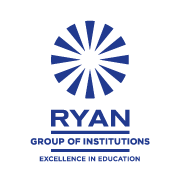With digitalisation shapeshifting, expanding, and embedding itself into every crevice of commerce, labor, and consumption, financial literacy is the need of the hour. Schools are the first building block of a student, and acts as a medium of imparting knowledge from the four walls of the house to the classroom to the complex and ever-expanding world. From learning how to count coins and understand rupee denominations to navigating e-commerce platforms and digital payments, students today need to be equipped with the financial know-how to thrive in a technologically advanced era.
Why start early?
Research suggests that most key habits and attitudes are grasped by the age of 7, making early education and imparting necessary life skills a major component of learning and unlearning. At age 5, a child’s brain is highly plastic, meaning it’s extremely adaptable and capable of forming and absorbing new concepts, primarily through sensory integration. Financial literacy can be taught step by step by cementing and strengthening the core concepts of Mathematics and mental ability. By considering a child in first grade, let me illustrate a step-by-step example of the same:
- He must first recognize a ₹10 note by differentiating it from other currency notes.
- Then calculate the amount of change, and count the number of notes needed to purchase a ₹50 toy. This establishes the concepts of addition and multiplication.
- For subtraction and division, two scenarios can be visualised:
- “If you give ₹100 to the shopkeeper for a ₹50 toy, how much change will you get back?”
This helps the child visualize subtraction as removing or deducting one quantity from another. ₹100 – ₹50 = ₹50 (change) - “If one toy costs ₹10, how many can you buy with ₹100?”
₹100 ÷ ₹10 = 10 toys. Use real or play money and toys for a hands-on activity
Such activities can be conducted by dividing the class into groups, making one the shopkeeper and others as potential customers, forming a makeshift store. This can establish the relationship between demand and supply through a small activity, which can further be linked to the core aspects of trading, resource allocation, budgeting and most importantly, wise spending and saving.
Topics such as addition, subtraction, multiplication, percentages, and interest become meaningful when taught through the concept of money. For example, a bank savings account helps in grasping the concept of percentage. If students understand that ₹1,000 in a savings account with 5% yearly interest will turn into ₹1,050 after a year, they realize that saving almost effortlessly pays off. Engaging students via experiential learning allows them to truly master not just the “how” but also the “why” of concepts and develop rigorous academic and practical life skills.
In unwinding spending trends, elementary and middle schoolers could be taught statistics while seniors are taught linear equations in EMI as well as loan repayment principles. Compound interest and other investment strategies offer a great opportunity to teach math and exponential growth. When students see the importance of mathematics both in theory and in financial planning, they get motivated to do better. In fact, exposing students to math-centered financial problem solving not only normalizes monetary conversations but reduces anxiety; thus, shifting the impression that mathematics is hard.
Advantages of teaching financial literacy at an early age:
Most students, particularly those from low-income households, lack a basic understanding of finance. Every child having access to appropriate financial education is crucial because it enables informed decision-making that helps in breaking the chains of poverty for families locked in generations of economic despair. It furthers equity, mobility, and greater societal inclusion in education by serving everyone’s needs irrespective of class or caste and provides the growing economy with equal opportunity. Children learn to control their impulses through saving and prioritizing over spending on trivial items. Such lessons reinforce self-control, goal-setting, sustained effort over time (also known as grit), which has a lasting impact on academic achievement and overall personal development well beyond entering the workforce.
The advent of UPI and digital wallets coupled with increasing cashless transactions means children have begun witnessing a transformation in monetary interactions even before they’ve grasped its value. Without proper guidance at school on transaction accelerators like budgeting applications or online safety protocols, children run the risk of developing dangerous preconceptions about finances.
Role of education policies like NEP:
The NEP 2020 incorporates rational financial education at all levels from primary to secondary school as an essential life skill needed for comprehensive growth and preparing students for the future. The integration of literacy concerning finances into mathematics, social science and vocational subjects equips learners to gain knowledge to attain economic self-sufficiency and become responsible citizens which is a goal NEP seeks to achieve.
Financial Literacy has now been universally accepted as a core ‘life skill’ rather than an extra one ‘nice to have.’ Hence it is important to foster Financial Literacy in students today so that they become productive future citizens of the nation, as it is these young individuals who will be joining the workforce soon and would be thrust into situations where they would be expected to deal with money matters effectively.




